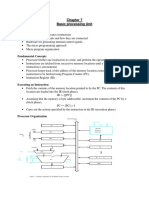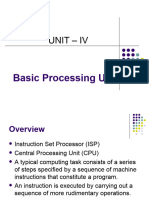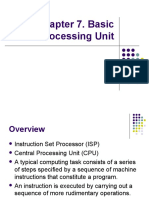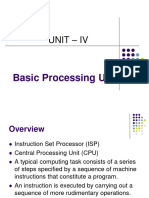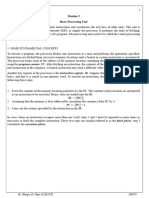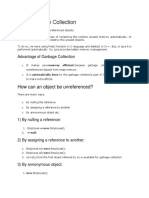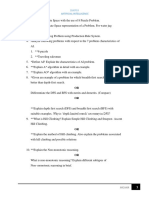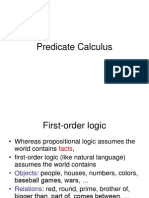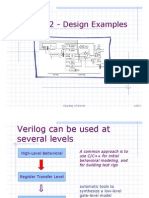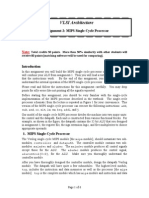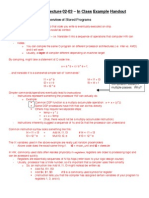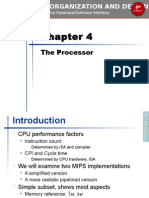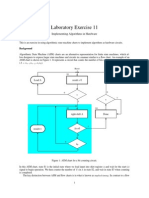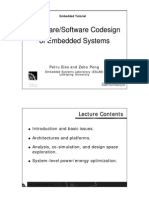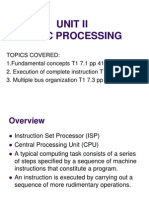0% found this document useful (0 votes)
256 views20 pagesChapter 7 Notes Computer Organization
The document provides details about the basic processing unit of a computer processor. It discusses how a processor executes instructions in a sequence of fetch, decode, and execute steps. The key components of a processor include the program counter, instruction register, registers, arithmetic logic unit, and control unit. Instructions are fetched from memory locations pointed to by the program counter. The processor uses a combination of hardwired control signals and microcode to control the flow and sequencing of data between components in order to perform operations specified by instructions.
Uploaded by
sriCopyright
© © All Rights Reserved
We take content rights seriously. If you suspect this is your content, claim it here.
Available Formats
Download as PDF, TXT or read online on Scribd
0% found this document useful (0 votes)
256 views20 pagesChapter 7 Notes Computer Organization
The document provides details about the basic processing unit of a computer processor. It discusses how a processor executes instructions in a sequence of fetch, decode, and execute steps. The key components of a processor include the program counter, instruction register, registers, arithmetic logic unit, and control unit. Instructions are fetched from memory locations pointed to by the program counter. The processor uses a combination of hardwired control signals and microcode to control the flow and sequencing of data between components in order to perform operations specified by instructions.
Uploaded by
sriCopyright
© © All Rights Reserved
We take content rights seriously. If you suspect this is your content, claim it here.
Available Formats
Download as PDF, TXT or read online on Scribd
/ 20
